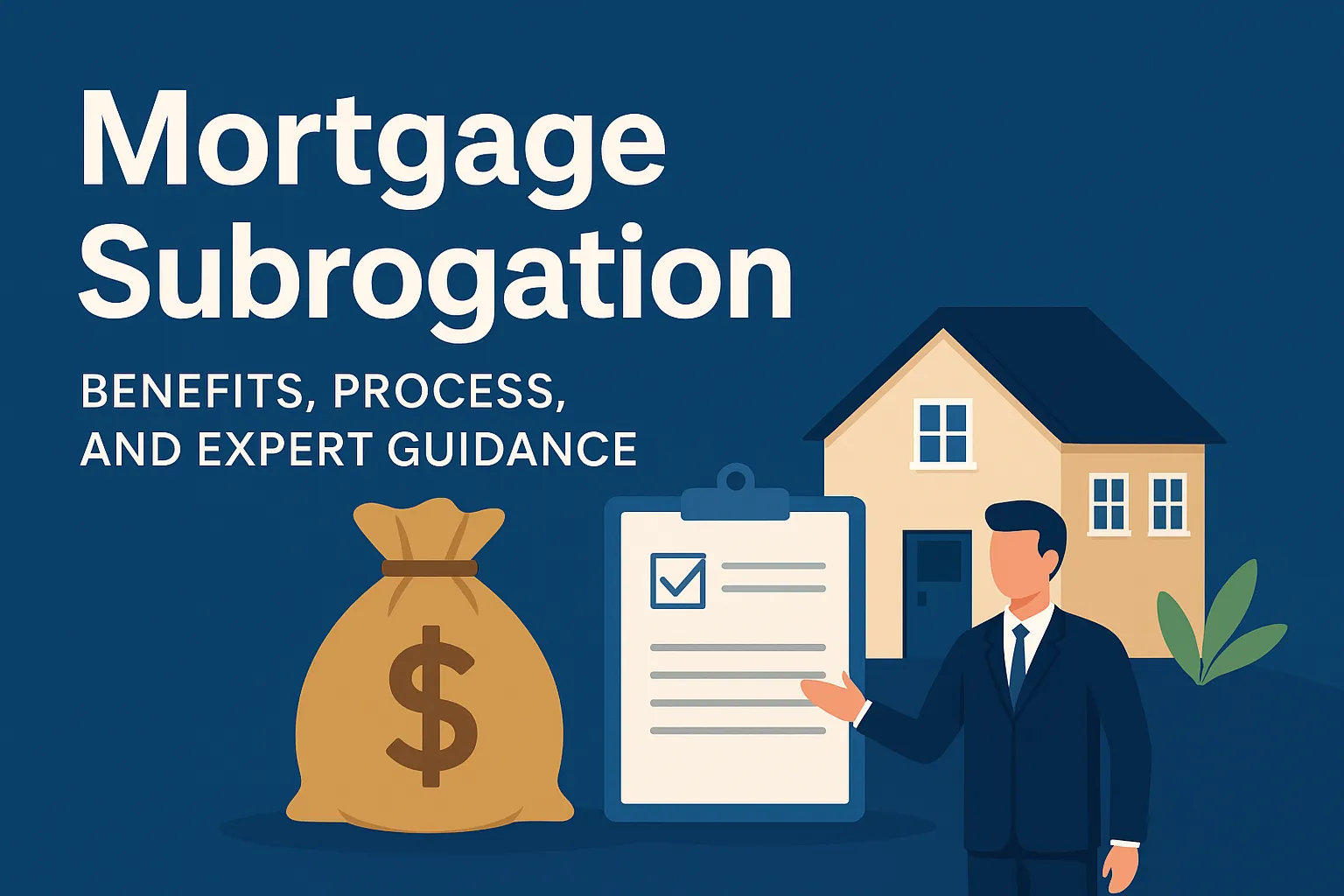Home Loans: Complete Guide to Types, Options, and Top Lenders
Understanding Home Loans: Your Gateway to Homeownership
A home loan, also known as a mortgage, represents one of the most significant financial commitments most people will make in their lifetime. It's a specialized loan designed specifically for purchasing residential property, allowing individuals to fulfill their homeownership dreams without having to pay the entire cost upfront. Instead, borrowers make regular payments over an extended period, typically ranging from 15 to 30 years.
The home loan market offers diverse options to accommodate various financial situations, property types, and borrower qualifications. Understanding these options is crucial for making informed decisions that align with your long-term financial goals and homeownership aspirations.
Core Components of Home Loans
Before diving into specific loan types, it's essential to understand the fundamental components that make up any home loan:
Principal
The principal is the initial amount borrowed to purchase a home. This represents the difference between the home's purchase price and your down payment. For example, if you're buying a $300,000 home and making a $60,000 down payment, your loan principal would be $240,000.
Interest Rate
The interest rate is the cost of borrowing money, expressed as a percentage of the loan amount. This rate can be fixed (remaining constant throughout the loan term) or adjustable (changing periodically based on market conditions). Even small differences in interest rates can significantly impact the total amount paid over the life of a loan.
Loan Term
The loan term refers to the length of time you have to repay the loan. Common mortgage terms include 15, 20, and 30 years. Longer terms typically mean lower monthly payments but higher total interest costs over the life of the loan.
Down Payment
The down payment is the initial upfront portion of the home purchase price paid by the buyer. Traditional loans often require down payments of 20% of the purchase price, though many loan programs now offer options with lower down payment requirements.
Closing Costs
Closing costs encompass various fees associated with finalizing a mortgage, including origination fees, appraisal fees, title insurance, and other charges. These typically range from 2% to 5% of the loan amount.
Major Types of Home Loans
The mortgage market offers several distinct loan types, each with unique features designed to meet different borrower needs:
Conventional Loans
Conventional loans are mortgage loans that are not insured or guaranteed by the federal government. These loans follow the guidelines set by Fannie Mae and Freddie Mac, the government-sponsored enterprises that purchase mortgages from lenders.
Key features of conventional loans include:
- Down payment requirements: Typically 3% to 20% of the purchase price
- Credit score requirements: Generally require scores of 620 or higher
- Private Mortgage Insurance (PMI): Required for down payments less than 20%, but can be removed once 20% equity is reached
- Loan limits: Subject to conforming loan limits that vary by county
Conventional loans are often ideal for borrowers with strong credit profiles and the ability to make substantial down payments.
FHA Loans
Federal Housing Administration (FHA) loans are government-backed mortgages designed to help borrowers with lower credit scores and limited funds for down payments become homeowners.
Distinctive characteristics of FHA loans include:
- Down payment requirements: As low as 3.5% with a credit score of 580 or higher
- Credit flexibility: May qualify with scores as low as 500 with a 10% down payment
- Mortgage Insurance Premium (MIP): Required upfront and annually throughout the loan term (regardless of equity)
- Debt-to-income ratios: More flexible than conventional loans
FHA loans often serve as an excellent option for first-time homebuyers and those rebuilding credit.
VA Loans
VA loans are mortgages guaranteed by the U.S. Department of Veterans Affairs, designed exclusively for eligible veterans, active-duty service members, and surviving spouses.
Notable features of VA loans include:
- Down payment: No down payment required in most cases
- No private mortgage insurance: Significant cost savings over the life of the loan
- Competitive interest rates: Often lower than conventional loans
- Funding fee: One-time fee that can be financed into the loan (waived for certain disabled veterans)
VA loans represent one of the most beneficial mortgage options available for those who qualify based on their military service.
USDA Loans
USDA loans are backed by the United States Department of Agriculture and designed to promote homeownership in designated rural and suburban areas.
Key aspects of USDA loans include:
- Down payment: No down payment required
- Geographic restrictions: Property must be in an eligible rural or suburban area
- Income limits: Borrowers must meet specific income requirements
- Guarantee fee: Upfront and annual fees apply (lower than FHA mortgage insurance)
USDA loans provide an affordable pathway to homeownership for moderate-income borrowers in qualifying locations.
Jumbo Loans
Jumbo loans are mortgages that exceed the conforming loan limits set by Fannie Mae and Freddie Mac, making them necessary for purchasing higher-priced properties.
Distinctive features of jumbo loans include:
- Loan amounts: Exceed conforming limits (currently $726,200 in most areas)
- Stricter requirements: Higher credit scores, lower debt-to-income ratios, and larger reserves often required
- Down payments: Typically 10% to 20% or more
- Interest rates: May be higher than conforming loans
Jumbo loans cater to borrowers purchasing luxury homes or properties in high-cost housing markets.
Interest Rate Structures
Beyond the basic loan types, mortgages also differ in how their interest rates are structured:
Fixed-Rate Mortgages
Fixed-rate mortgages maintain the same interest rate throughout the entire loan term, resulting in consistent, predictable monthly payments. These loans provide stability and protection against rising interest rates.
Common fixed-rate terms include:
- 30-year fixed: Lower monthly payments but higher total interest costs
- 15-year fixed: Higher monthly payments but significant interest savings and faster equity building
- 20-year fixed: A middle-ground option between 15 and 30-year terms
Fixed-rate mortgages are particularly advantageous in low-interest-rate environments or for borrowers who value payment stability.
Adjustable-Rate Mortgages (ARMs)
Adjustable-rate mortgages feature interest rates that change periodically after an initial fixed-rate period. These loans are identified by numbers indicating their structure—for example, a 5/1 ARM has a fixed rate for five years, then adjusts annually thereafter.
Key characteristics of ARMs include:
- Initial fixed period: Commonly 3, 5, 7, or 10 years
- Adjustment frequency: Usually annual after the fixed period
- Rate caps: Limits on how much rates can increase per adjustment and over the life of the loan
- Initial rates: Typically lower than fixed-rate mortgages
ARMs can be appropriate for borrowers planning to move or refinance before the initial fixed period ends or those expecting their income to increase over time.
Interest-Only Mortgages
Interest-only mortgages allow borrowers to pay only the interest portion of their loan for an initial period, typically 5-10 years, before beginning to pay down the principal.
Notable aspects include:
- Lower initial payments: During the interest-only period
- Payment increase: Substantial increase when principal payments begin
- Qualification requirements: Typically stricter than traditional mortgages
These loans are less common today and generally best suited for borrowers with variable income or specific short-term financial strategies.
Specialized Home Loan Programs
Beyond the major loan types, several specialized programs cater to specific borrower needs:
First-Time Homebuyer Programs
Many states and local governments offer programs specifically designed to assist first-time homebuyers through down payment assistance, closing cost grants, tax credits, and reduced interest rates. These programs often have income limits and require homebuyer education courses.
Renovation Loans
Renovation loans combine home purchase and improvement costs into a single mortgage, allowing borrowers to finance both the acquisition and rehabilitation of a property.
Common renovation loan options include:
- FHA 203(k) loans: Government-backed loans for purchasing and renovating homes
- Fannie Mae HomeStyle loans: Conventional renovation loans with flexible improvement options
- VA renovation loans: Available to eligible veterans for purchasing and improving homes
These loans are particularly valuable for purchasing fixer-upper properties or updating older homes.
Energy-Efficient Mortgages (EEMs)
Energy-efficient mortgages help borrowers finance energy-saving improvements as part of their mortgage. These loans allow for higher debt-to-income ratios based on projected utility savings and are available through FHA, VA, and conventional loan programs.
Reverse Mortgages
Reverse mortgages allow homeowners aged 62 and older to convert part of their home equity into cash without selling their home or taking on monthly mortgage payments. The loan is repaid when the borrower moves, sells the home, or passes away.
The most common type is the Home Equity Conversion Mortgage (HECM), which is insured by the Federal Housing Administration.
Top Banks and Financial Institutions for Home Loans
When seeking a home loan, borrowers can choose from various lender types, each offering different advantages:
Traditional Banks
Major national banks that offer comprehensive mortgage services include:
- Chase Bank: Offers a wide range of mortgage products and has an extensive branch network
- Bank of America: Features specialized programs for first-time homebuyers and low-to-moderate income borrowers
- Wells Fargo: Provides diverse loan options and has a significant mortgage servicing portfolio
- Citibank: Offers competitive rates and various loan types with potential relationship discounts
Traditional banks often appeal to borrowers who value established relationships, in-person service, and the convenience of having multiple financial services under one roof.
Credit Unions
Credit unions are member-owned financial cooperatives that frequently offer competitive mortgage rates and personalized service:
- Navy Federal Credit Union: Serves military members and their families with specialized mortgage products
- Pentagon Federal Credit Union (PenFed): Offers competitive rates and low fees
- Alliant Credit Union: Features digital mortgage applications and competitive rates
- First Tech Federal Credit Union: Provides innovative mortgage solutions for technology professionals
Credit unions typically focus on member service rather than profit maximization, potentially resulting in better rates and more flexible terms.
Mortgage-Specific Lenders
These lenders specialize exclusively in mortgage products:
- Rocket Mortgage: Known for its streamlined digital application process and quick closings
- United Wholesale Mortgage: Works through mortgage brokers to offer competitive rates
- loanDepot: Combines digital convenience with in-person support through local branches
- Caliber Home Loans: Specializes in serving various borrower profiles, including self-employed individuals
Mortgage-specific lenders often provide efficient processing and specialized expertise in home lending.
Online Lenders
Digital-first mortgage providers have grown significantly in recent years:
- Better.com: Offers a commission-free model with a streamlined digital process
- Guaranteed Rate: Provides a digital application with personal support from loan officers
- SoFi: Features competitive rates and member benefits for qualified borrowers
- Ally Bank: Offers a fully digital mortgage experience with dedicated loan advisors
Online lenders typically appeal to tech-savvy borrowers seeking convenience and potentially lower fees due to reduced overhead costs.
The Mortgage Application Process
Understanding the mortgage application process helps borrowers navigate the path to homeownership more effectively:
Pre-Approval
Mortgage pre-approval involves a preliminary lender evaluation of your financial situation to determine how much you might be able to borrow. This step typically includes:
- Credit check and score evaluation
- Income and employment verification
- Asset and debt assessment
- Issuance of a pre-approval letter (valid for typically 60-90 days)
Pre-approval strengthens your position as a buyer by demonstrating serious intent and financial readiness to sellers.
Formal Application
Once you've found a property and had an offer accepted, the formal mortgage application process begins:
- Completing the Uniform Residential Loan Application (Form 1003)
- Providing detailed financial documentation
- Paying application fees
- Authorizing the lender to verify employment, assets, and debts
Underwriting
During underwriting, the lender thoroughly evaluates your application against their lending criteria:
- Property appraisal to confirm value
- Title search to ensure clear ownership
- Detailed financial analysis
- Risk assessment
This process may require additional documentation or explanations for any financial irregularities.
Closing
The closing (or settlement) represents the final step in the mortgage process:
- Reviewing and signing final loan documents
- Paying closing costs and down payment
- Transferring property ownership
- Funding the loan
After closing, you officially become a homeowner and begin making mortgage payments according to your loan terms.
Factors Affecting Mortgage Approval and Rates
Several key factors influence both your ability to secure a mortgage and the interest rate you'll receive:
Credit Score
Your credit score significantly impacts loan approval and interest rates. Generally:
- 740+ scores typically qualify for the best rates
- 620-739 may face slightly higher rates
- Below 620 may require specialized programs like FHA loans
Improving your credit score before applying can lead to substantial long-term savings.
Debt-to-Income Ratio (DTI)
DTI measures your monthly debt payments relative to your gross monthly income:
- Front-end DTI: Housing costs divided by monthly income (ideally below 28%)
- Back-end DTI: All debt payments divided by monthly income (ideally below 36-43%)
Lower DTI ratios demonstrate greater capacity to manage mortgage payments.
Down Payment Size
Larger down payments often result in:
- Lower interest rates
- Reduced or eliminated mortgage insurance
- Lower monthly payments
- Greater initial equity
While 20% down is traditional, many loan programs allow for much smaller down payments.
Employment History
Lenders typically prefer borrowers with:
- Two+ years in the same field
- Stable or increasing income
- Verifiable income sources
Recent job changes may require additional documentation or explanation but aren't necessarily disqualifying.
Refinancing Home Loans
Refinancing involves replacing your existing mortgage with a new one, potentially offering various benefits:
Rate-and-Term Refinancing
This common refinancing approach aims to secure a better interest rate, change the loan term, or both. Benefits may include:
- Lower monthly payments through reduced interest rates
- Shorter loan terms to build equity faster and save on interest
- Switching from adjustable to fixed rates for payment stability
Cash-Out Refinancing
Cash-out refinancing allows homeowners to borrow against their accumulated equity:
- New loan amount exceeds the current mortgage balance
- Difference is provided as cash to the homeowner
- Commonly used for home improvements, debt consolidation, or major expenses
This option typically requires maintaining at least 20% equity after refinancing.
Streamline Refinancing
Government-backed loans offer streamlined refinancing options with simplified processes:
- FHA Streamline Refinance for existing FHA loans
- VA Interest Rate Reduction Refinance Loan (IRRRL) for VA loans
- USDA Streamlined Assist for USDA loans
These programs typically require less documentation and may waive appraisal requirements.
Making the Right Home Loan Decision
Selecting the optimal mortgage involves careful consideration of your financial situation, homeownership goals, and market conditions:
Assessing Your Financial Readiness
Before applying for a mortgage, evaluate:
- Credit health and opportunities for improvement
- Savings for down payment and closing costs
- Budget for monthly payments and homeownership expenses
- Emergency fund adequacy after home purchase
Shopping and Comparing Lenders
Mortgage rates, terms, and fees can vary significantly between lenders. Best practices include:
- Obtaining loan estimates from multiple lenders
- Comparing interest rates, APR, and total loan costs
- Evaluating lender reputation and service quality
- Considering the full package beyond just the interest rate
Rate shopping within a focused period (typically 14-45 days) counts as a single credit inquiry for scoring purposes.
Working with Mortgage Professionals
Various professionals can guide you through the mortgage process:
- Loan officers: Represent specific lenders and their products
- Mortgage brokers: Work with multiple lenders to find suitable options
- Housing counselors: Provide objective advice and education
These professionals can help clarify complex mortgage terms and identify appropriate loan programs for your situation.
Conclusion
Home loans represent a critical financial tool that makes homeownership accessible to millions who couldn't otherwise afford to purchase property outright. By understanding the various loan types, interest rate structures, lender options, and qualification factors, prospective homebuyers can navigate the mortgage landscape with greater confidence.
The ideal home loan varies based on individual circumstances—financial situation, homeownership goals, risk tolerance, and market conditions all play important roles in determining the most appropriate choice. Taking time to research options, improve financial readiness, and consult with mortgage professionals can lead to substantial long-term benefits.
Whether you're a first-time homebuyer exploring entry-level options, a move-up buyer seeking expanded financing, or a homeowner considering refinancing, the mortgage market offers diverse solutions to support your homeownership journey. By approaching the process with knowledge and preparation, you can secure financing that not only makes homeownership possible but also aligns with your broader financial objectives.











